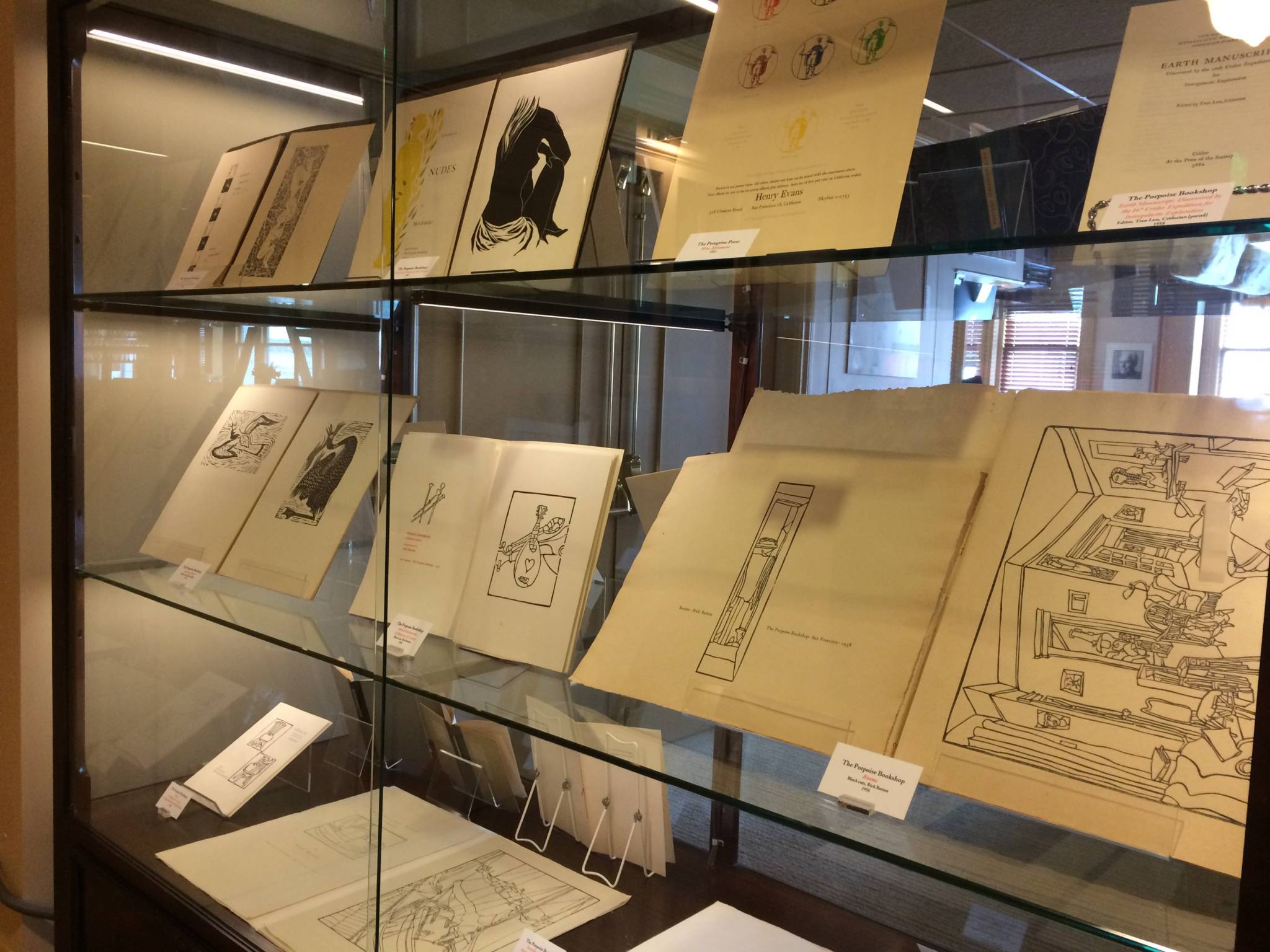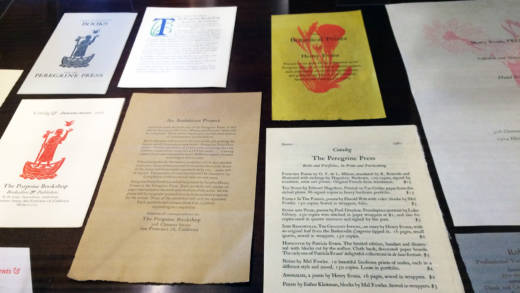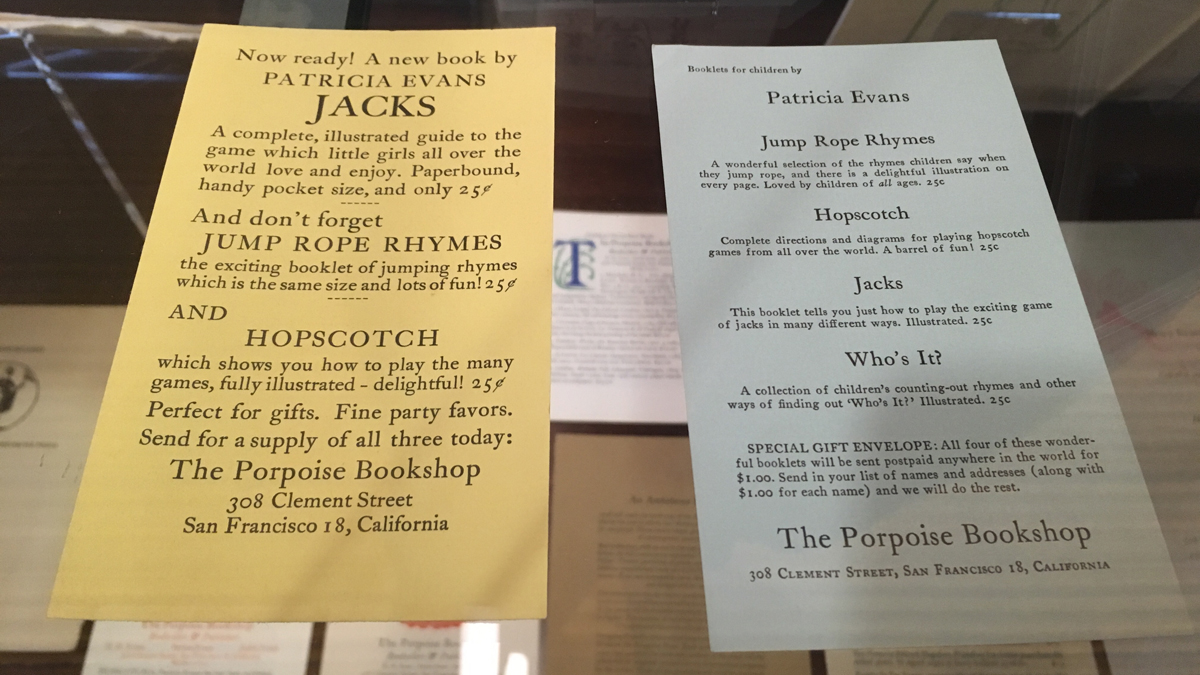Two things you will not learn about Henry Evans upon visiting the cozy Union-Square-adjacent fifth floor rooms of the Book Club of California: in 1955, Evans passed up the opportunity to publish Allen Ginsberg’s Howl; and in 1990, when he died, Evans was a celebrated botanical printmaker.
These are details withheld, along with many others, from Henry Evans, The Peregrine Press & The Porpoise Bookshop, because it is a curious show. As in, it makes one want to learn more. But where to gather that additional information is on you, because this particular exhibition isn’t offering free history lessons.
In two large glass cases and one flat vitrine, fine prints, books and ephemera produced by Henry Evans, his wife Patricia and their daughter Judith during the ’50s and early ’60s charmingly illustrate the output, in their own letterpressed words, of a small press devoted to printing original, contemporary work by living artists, writers and poets.

Without wall text or expanded artwork labels (beyond titles, dates and names) the display signals “important stuff!” without actually telling viewers why the stuff is so important. A brief paragraph on the exhibition’s image list claims Evans’ work was “singularly influential on California’s small press movement.” But sans context, compelling corroboration or any sort of editorializing on the part of curator John Crichton (owner of local antiquarian bookstore Brick Row Book Shop and former president of the Book Club of California), the viewer sees only the primary materials of a particular press during a particular period, a presentation that, while pleasing, led to a lot of question marks in my notebook.
You might have a similar experience, unless you’re a subscriber to the Book Club’s Quarterly News-Letter and happened to read Crichton’s two-part essay, published in 2015, on the history of the Evans family and their publishing operations. I am not, but I did. So let me fill in some blanks.





